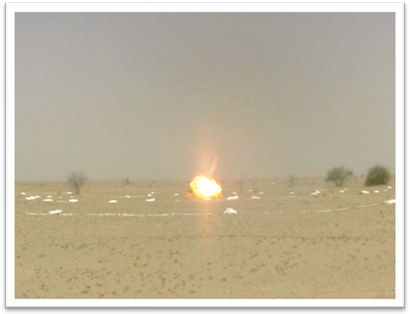
On the 18th of May, 1974, India conducted what it described as a “peaceful nuclear explosion” (PNE) in the Rajasthan desert near Pokhran. This momentous event was not only a scientific breakthrough but also a strategic masterstroke that altered the geopolitics of South Asia and the broader nuclear landscape. The detonation, dubbed “Smiling Buddha,” signaled India’s entry into the exclusive club of nuclear-capable states, although the Indian government insisted the test was aimed at exploring peaceful applications such as enhanced mining techniques and oil extraction.
The 1974 explosion was influenced by a confluence of factors. Dr. Anil Kakodkar, a central figure in India’s nuclear program, recalled the US’s deployment of the nuclear-powered aircraft carrier Enterprise into the Bay of Bengal during the 1971 war with Pakistan as a significant impetus for the test. This move was perceived as an act of intimidation, underlining the necessity of a robust self-reliant defense strategy for India. Moreover, there was burgeoning global interest in the peaceful uses of atomic energy, which partly justified the Indian initiative.

The test was not without its consequences. It met with a stern backlash, particularly from superpowers like the United States, leading to sanctions that impeded progress in India’s atomic energy program. The US subsequently established a non-proliferation framework that was, in part, a direct response to India’s actions. Despite these challenges, India’s emphasis on self-reliance bore fruit, as it continued to build capacity and capability, culminating in a largely indigenous nuclear program.
The exploration of peaceful nuclear explosions was not unique to India. Both the USA and the USSR conducted over 150 PNE experiments between the late 1950s and the late 1980s, investigating applications such as large-scale excavation and stimulating oil and gas recovery. The Plowshare Program in the USA and the Soviet “Nuclear Explosions for the National Economy” initiative demonstrate the dual-use nature of nuclear technology, which can be directed toward either military or civilian ends.

This duality of purpose is central to the controversy surrounding PNEs, as the technology developed for peaceful applications is closely related to military capabilities. Indeed, the Comprehensive Nuclear Test-Ban Treaty, which seeks to ban all nuclear explosions, including PNEs, reflects ongoing concerns over the potential military implications of such tests.
India’s test was a pivotal moment that influenced its long-time rival, Pakistan, to accelerate its nuclear program. While Canada and the United States reacted by cutting off nuclear assistance and imposing restrictions, India continued its nuclear research, albeit discreetly. This development was a clear demonstration of India’s intention to maintain strategic autonomy and bolster its national security, particularly in the face of perceived threats from regional adversaries.
The 1974 nuclear test was a watershed event for India, marking a transition from a nation under strategic pressure to one asserting its sovereignty and technological prowess. The balance between peaceful uses of nuclear technology and the specter of proliferation continues to shape global nuclear policy, with India’s historic test serving as a reminder of the thin line that separates the two.
Relevant articles:
– Peaceful Nuclear Explosion Of May 1974 Driven Twin Reasons, StratNews Global
– Peaceful Nuclear Explosions, World Nuclear Association
– The Peaceful Explosion, Atomic Archive
– The U.S., Canada, and the Indian Nuclear Program, 1968-1974, National Security Archive
